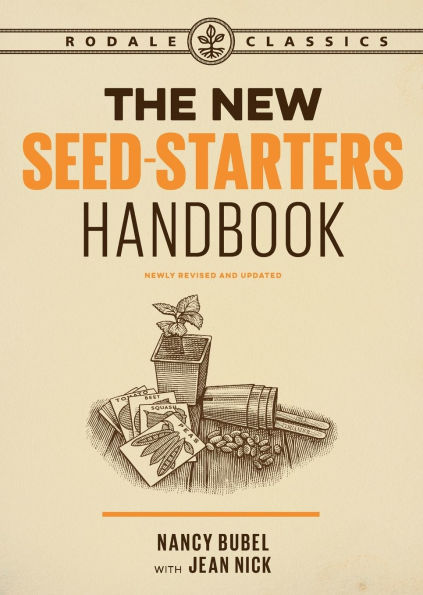The New Seed-Starters Handbook
Starting plants from a seed grants earlier harvests, greater variety, healthier seedlings, lower costs, and the undeniable sense of satisfaction and reward.
For the most complete, up-to-date information on starting plants from seed, turn to The New Seed-Starter's Handbook. Written by a gardener with 30 years of experience, this updated, easy-to-use reference explains everything you need to know to start seeds and raise healthy seedlings successfully.
You'll find:
- The latest research in seed starting
- The best growing media
- The newest gardening materials
- Solutions to seed-starting problems
- Source lists for seeds and hard-to-find gardening supplies
The robust encyclopedia section lists more than 200 plants—including vegetables and fruits, garden flowers, wildflowers, herbs, trees, and shrubs—with details on how to start each from seed.
1006077396
For the most complete, up-to-date information on starting plants from seed, turn to The New Seed-Starter's Handbook. Written by a gardener with 30 years of experience, this updated, easy-to-use reference explains everything you need to know to start seeds and raise healthy seedlings successfully.
You'll find:
- The latest research in seed starting
- The best growing media
- The newest gardening materials
- Solutions to seed-starting problems
- Source lists for seeds and hard-to-find gardening supplies
The robust encyclopedia section lists more than 200 plants—including vegetables and fruits, garden flowers, wildflowers, herbs, trees, and shrubs—with details on how to start each from seed.
The New Seed-Starters Handbook
Starting plants from a seed grants earlier harvests, greater variety, healthier seedlings, lower costs, and the undeniable sense of satisfaction and reward.
For the most complete, up-to-date information on starting plants from seed, turn to The New Seed-Starter's Handbook. Written by a gardener with 30 years of experience, this updated, easy-to-use reference explains everything you need to know to start seeds and raise healthy seedlings successfully.
You'll find:
- The latest research in seed starting
- The best growing media
- The newest gardening materials
- Solutions to seed-starting problems
- Source lists for seeds and hard-to-find gardening supplies
The robust encyclopedia section lists more than 200 plants—including vegetables and fruits, garden flowers, wildflowers, herbs, trees, and shrubs—with details on how to start each from seed.
For the most complete, up-to-date information on starting plants from seed, turn to The New Seed-Starter's Handbook. Written by a gardener with 30 years of experience, this updated, easy-to-use reference explains everything you need to know to start seeds and raise healthy seedlings successfully.
You'll find:
- The latest research in seed starting
- The best growing media
- The newest gardening materials
- Solutions to seed-starting problems
- Source lists for seeds and hard-to-find gardening supplies
The robust encyclopedia section lists more than 200 plants—including vegetables and fruits, garden flowers, wildflowers, herbs, trees, and shrubs—with details on how to start each from seed.
19.99
In Stock
5
1

The New Seed-Starters Handbook
464
The New Seed-Starters Handbook
464Paperback(Revised)
$19.99
19.99
In Stock

Product Details
| ISBN-13: | 9781635651041 |
|---|---|
| Publisher: | Harmony/Rodale |
| Publication date: | 01/30/2018 |
| Series: | Rodale Organic Gardening |
| Edition description: | Revised |
| Pages: | 464 |
| Sales rank: | 390,201 |
| Product dimensions: | 6.50(w) x 9.10(h) x 1.40(d) |
About the Author
From the B&N Reads Blog
